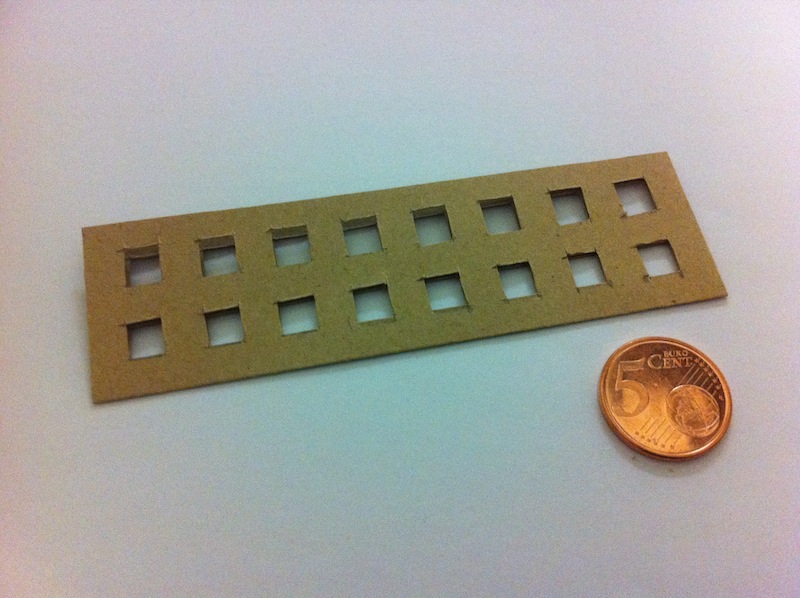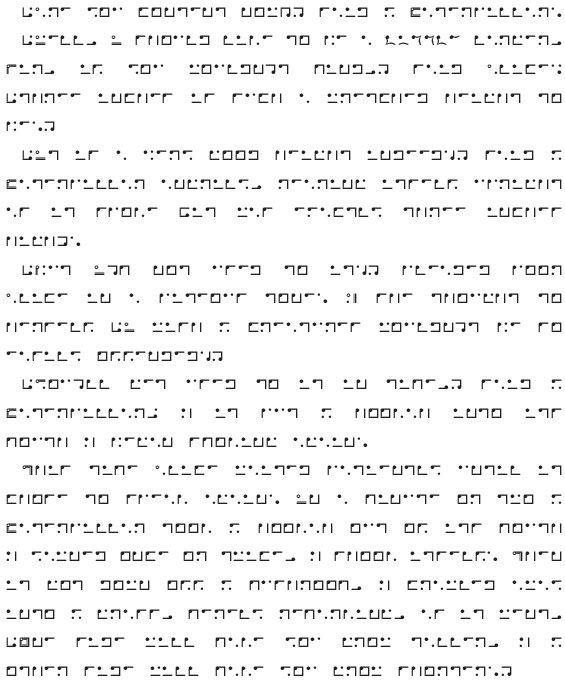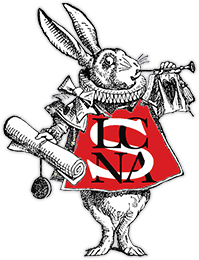Imagine this… You are tucked up in bed and have a brilliant idea that must be written down. It’s dark, it’s late, and bedside lights have not been invented yet. What do you do? If you are Lewis Carroll you invent an entirely new system of writing – a card template of square holes, and a square alphabet to fit inside. Problem solved!
Any one who has tried, as I have often done, the process of getting out of bed at 2 a.m. in a winter night, lighting a candle, and recording some happy thought which would probably be otherwise forgotten, will agree with me it entails much discomfort. All I have now to do, if I wake and think of something I wish to record, is to draw from under the pillow a small memorandum book containing my Nyctograph, write a few lines, or even a few pages, without even putting the hands outside the bed-clothes, replace the book, and go to sleep again. – Lewis Carroll, Letter to The Lady magazine in October 1891


In 2005, LCSNA-member Alan Tannenbaum built a square alphabet font and transcribed and produced a limited edition of Alice’s Adventures Under Ground – some of you may be proud owners of the rare “Square Alice.” Now, for the first time, a square alphabet edition of Alice’s Adventures in Wonderland has been published by Evertype and is for sale on Amazon. Below is an example of the text – it’s the passage that begins “‘Are you content now?’ said the Caterpillar,” though you may need a light on to read it.

The edition includes a forward by Alan Tannenbaum and an introduction by publisher Michael Everson on the challenges of the typography. Very little else has been written about Carroll’s nyctograph, but closely related devices may lie all around you – Carroll’s invention prefigured the types of text-entry systems used for tablet computers by 100 years. His own square alphabet has even been cited as inspiration for a unistroke text entry method designed for people with sight or motor impairments.
If you can’t help but try to back-transcribe the passage above (I couldn’t), don’t forget about punctuation. It seems letter characters all have a large dot in the top left of the square, while punctuation characters have a large dot in the lower right.



I admit to being particularly proud of my solution for nyctographic italics.
I like it too. I also like the sense behind the punctuation characters and the fact that, with some, I only appreciated their relationships to the conventional symbols when I tried writing them for myself. (The question mark is great.) Why did you use a single character for “the”? Was that Carroll’s method?
Yes, Carroll used single characters for a number of purposes. See p. xiii of the book…